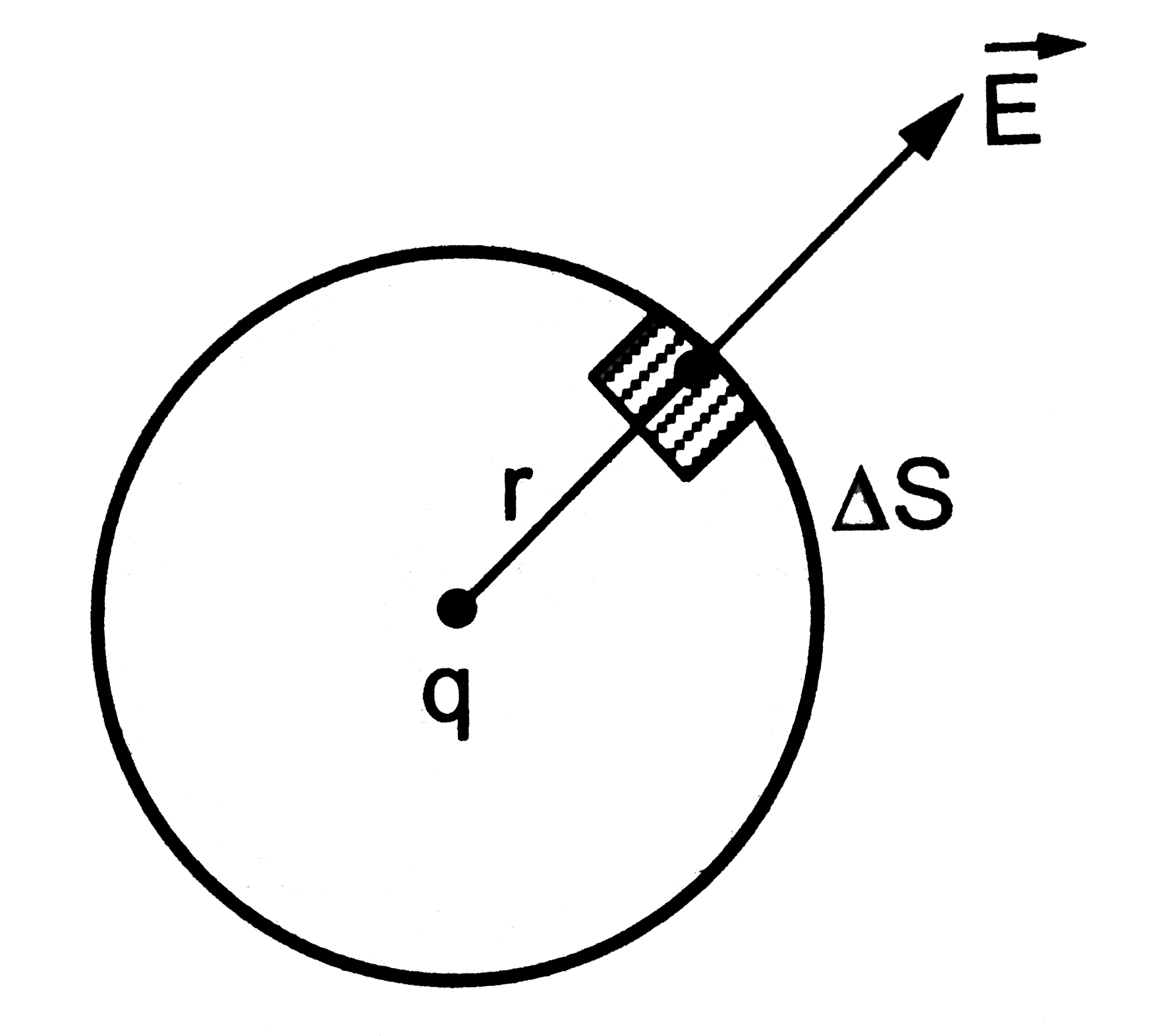A charge q is placed at the centre of a sphere. Taking outward normal as positive, find the flux of the electric field through the surface of the sphere due to the enclosed charge.Solution in Gujrati
Let us take a small element ΔS on the surface of the sphere (Figure 30.3(. The electric field here is radially outward and the magnitude.
q4πε0r2
where r is the rasius of the sphere. As the positive normal is also outward,θ−0 and the flux though this part is
ΔΦ=→EΔ→S=q4πε0r2 DeltaS.<br>Summingoverthepartsofthesphericalsurface,<br>Phi=sumDeltaPhi=q/4Piepsilon_0r^2 sum DeltaS=q/4phir^14ϕr2=qε0.

Topper's Solved these Questions
- GAUSS LAWBOOK - HC VERMACHAPTER - GAUSS LAWEXERCISE - Worked Out Examples
8 Videos
- GAUSS LAWBOOK - HC VERMACHAPTER - GAUSS LAWEXERCISE - Short Answer
7 Videos
- ELECTROMAGNETIC WAVESBOOK - HC VERMACHAPTER - ELECTROMAGNETIC WAVESEXERCISE - Exercises
9 Videos
- GEOMETRICAL OPTICSBOOK - HC VERMACHAPTER - GEOMETRICAL OPTICSEXERCISE - Exercises
77 Videos
Similar Questions
A uniform electric field of magnitude E=100NC−1 exists in the space in x-direction. Calculate the flux of this field through a plane square of edga 10 cm placed in the y-z plane. Take the normal along the positive x-axis to be positive.
View SolutionA small plane area is rotated in an electric field. In which orientation of the area is the flux of electric field through the area maximum? In which orientation is it zero.?
View SolutionShow that the dimensions of the displacement current (ε0dΦEdt) are that of an electric current.
View SolutionA concave mirror having a radius of curvature 40 cm is placed in front of an illuminated point source at a distance of 30 cm from it. Find the location of the image.
View SolutionA charge q is placed st the centre of a spher. Taking outward normal as positive, find the flux of the electric field through the surface of the sphere due to the enclosed charge.
View SolutionA charge Q is placed at the centre of a cub. Find the flux of the electric field through the six surfaced of the cube.
View SolutionA charge Q is enclosed by a spherical Gaussian surface of radius R. If the radius of the sphere is double, how will the outward electric flux charge ? If a charge −Q is brought outside the Gaussian surface, will the electric flux reduce to zero ?
View SolutionA positive charge of 17.7μC is placed at the centre of a hollow sphere of radius 0.5m. Calculate the flux density through the surface of the sphere.
View Solutionएक आवेश q के कारण दूरी R पर विद्युत् क्षेत्र E है। यदि इस आवेश को त्रिज्या R के ताँबे के गोले पर रख दिया जाए तो गोले की सतह पर विद्युत् क्षेत्र का मान होगा :
View SolutionA charge 'Q' is placed at the centre of a hemispherical surface of radius 'R'. The flux of electric field due to charge 'Q' through the surface of hemisphere is
View SolutionA charge q is placed at the centre of an imaginary spherical surface. What will be the electric flux due to this charge through any half of the sphere.
View SolutionAn electric dipole is placed inside a sphere. The centre of dipole is not at the centre of sphere, but the dipole is completely enclosed within the sphere . Calculate total flux through the spherical surface Q is one of the charges and l is distance between charges of dipole.
View SolutionA charge q is placed at the centre of a hollow sphere of radius r, Total electric flux passing through the spherical surface is __________
View SolutionAn electric dipole is placed at the centre of a sphere. The flux passing through the surface of the sphere is..........
View SolutionA charge q is placed st the centre of a spher. Taking outward normal as positive, find the flux of the electric field through the surface of the sphere due to the enclosed charge.
View SolutionA charge Q is placed at the centre of a cube. Find the flux of the electric field through the six surfaced of the cube.
View Solution
